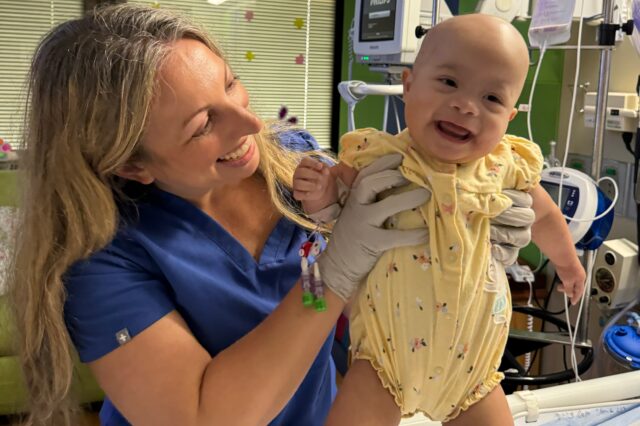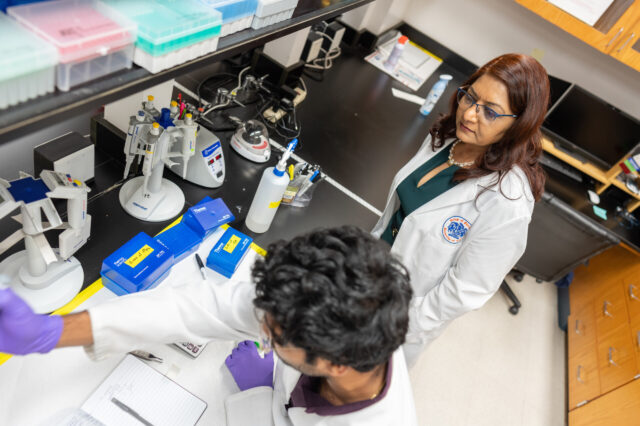Definition
Leukemia is a type of blood cancer that begins in the bone marrow. Bone marrow is the soft tissue in the center of the bones, where blood cells are produced.
The term leukemia means white blood. White blood cells (leukocytes) are used by the body to fight infections and other foreign substances. Leukocytes are made in the bone marrow.
Leukemia leads to an uncontrolled increase in the number of white blood cells.
The cancerous cells prevent healthy red cells, platelets, and mature white cells (leukocytes) from being made. Life-threatening symptoms can then develop as normal blood cells decline.
The cancer cells can spread to the bloodstream and lymph nodes. They can also travel to the brain and spinal cord (the central nervous system) and other parts of the body.
Leukemia can affect children and adults.
Leukemias are divided into two major types:
- Acute (which progresses quickly)
- Chronic (which progresses more slowly)
The main types of leukemia are:
Definition
Leukemia is a type of blood cancer that begins in the bone marrow. Bone marrow is the soft tissue in the center of the bones, where blood cells are produced.
The term leukemia means white blood. White blood cells (leukocytes) are used by the body to fight infections and other foreign substances. Leukocytes are made in the bone marrow.
Leukemia leads to an uncontrolled increase in the number of white blood cells.
The cancerous cells prevent healthy red cells, platelets, and mature white cells (leukocytes) from being made. Life-threatening symptoms can then develop as normal blood cells decline.
The cancer cells can spread to the bloodstream and lymph nodes. They can also travel to the brain and spinal cord (the central nervous system) and other parts of the body.
Leukemia can affect children and adults.
Leukemias are divided into two major types:
- Acute (which progresses quickly)
- Chronic (which progresses more slowly)
The main types of leukemia are:
References
Appelbaum FR. Acute leukemias in adults. In: Niederhuber JE, Armitage JO, Kastan MB, Doroshow JH, Tepper JE, eds. Abeloff's Clinical Oncology. 6th ed. Philadelphia, PA: Elsevier; 2020:chap 95.
Hunger SP, Teachey DT, Grupp S, Aplenc R. Childhood leukemia. In: Niederhuber JE, Armitage JO, Kastan MB, Doroshow JH, Tepper JE, eds. Abeloff's Clinical Oncology. 6th ed. Philadelphia, PA: Elsevier; 2020:chap 93.
References
Appelbaum FR. Acute leukemias in adults. In: Niederhuber JE, Armitage JO, Kastan MB, Doroshow JH, Tepper JE, eds. Abeloff's Clinical Oncology. 6th ed. Philadelphia, PA: Elsevier; 2020:chap 95.
Hunger SP, Teachey DT, Grupp S, Aplenc R. Childhood leukemia. In: Niederhuber JE, Armitage JO, Kastan MB, Doroshow JH, Tepper JE, eds. Abeloff's Clinical Oncology. 6th ed. Philadelphia, PA: Elsevier; 2020:chap 93.










